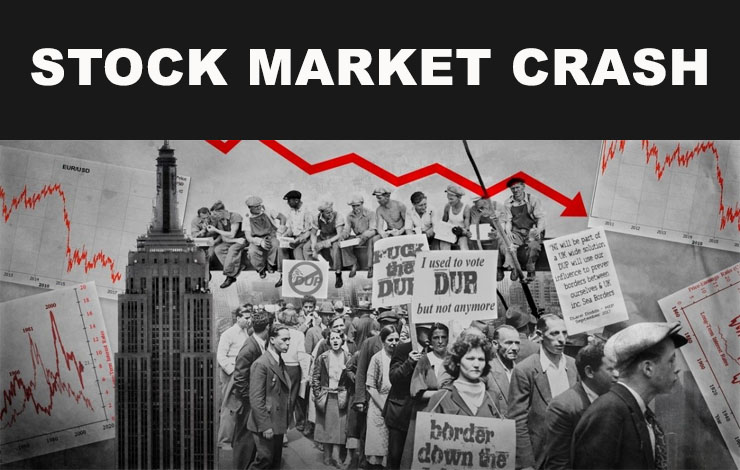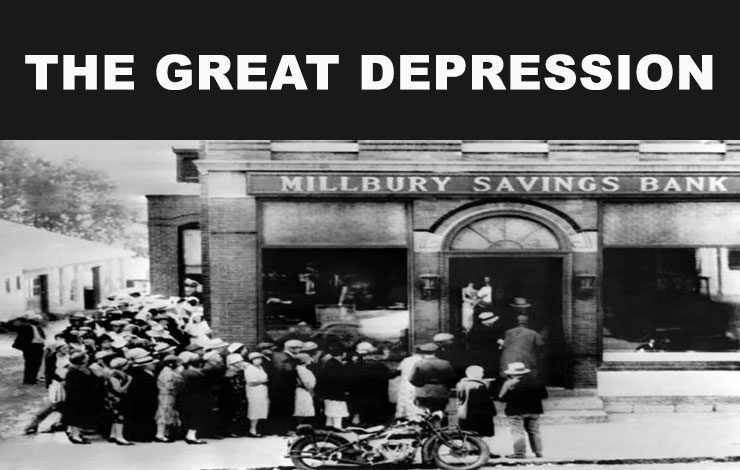What was the crisis of ’29?
The Great Depression was a major economic downturn that began in 1929 and lasted until the late 1930s. It was the worst economic crisis in the history of the industrialized world, and it had a devastating impact on the global economy.
The Great Depression had a number of causes, including:

Stock market cras
- The stock market crash of 1929: The stock market crash was the catalyst for the Great Depression. On October 29, 1929, the stock market crashed, wiping out billions of dollars in investor value. This led to a loss of confidence in the economy and a decline in consumer spending.
- The overproduction of goods: In the years leading up to the Great Depression, there was a period of rapid economic growth. This growth was fueled by easy credit and speculation in the stock market. However, this growth was not sustainable, and it led to an oversupply of goods. This made it difficult for businesses to sell their products, which led to job losses and unemployment.
- The Smoot-Hawley Tariff Act: The Smoot-Hawley Tariff Act was passed in 1930. This act imposed high tariffs on imports, which made it more expensive for businesses to import goods from other countries. This led to a decline in trade, which further damaged the global economy.
- The Dust Bowl: The Dust Bowl was a period of severe drought and dust storms that hit the American Midwest in the 1930s. This natural disaster caused widespread crop failures and forced many farmers off their land.
The stock market crash of 1929
The stock market crash of 1929 was the catalyst for the Great Depression. The stock market had been booming in the years leading up to the crash, and prices had become increasingly inflated. On October 29, 1929, the stock market began to collapse. On that day, known as Black Tuesday, the Dow Jones Industrial Average lost 12.8% of its value.
The stock market crash led to a loss of confidence in the economy and a decline in consumer spending. People became fearful of losing their money, and they began to save more and spend less. This led to a decline in demand for goods and services, which caused businesses to fail and unemployment to rise.
The overproduction of goods
In the years leading up to the Great Depression, there was a period of rapid economic growth. This growth was fueled by easy credit and speculation in the stock market. However, this growth was not sustainable, and it led to an oversupply of goods.
Businesses were producing more goods than people could afford to buy. This made it difficult for businesses to sell their products, which led to job losses and unemployment.
The Smoot-Hawley Tariff Act
The Smoot-Hawley Tariff Act was passed in 1930. This act imposed high tariffs on imports, which made it more expensive for businesses to import goods from other countries. This led to a decline in trade, which further damaged the global economy.
The Smoot-Hawley Tariff Act was a protectionist measure that was intended to protect American jobs. However, it backfired and led to a trade war with other countries. This trade war made it more difficult for businesses to export their goods, which led to job losses and unemployment.
The Dust Bowl
The Dust Bowl was a period of severe drought and dust storms that hit the American Midwest in the 1930s. This natural disaster caused widespread crop failures and forced many farmers off their land.
The Dust Bowl led to a decline in agricultural production and a loss of jobs in the agricultural sector. It also led to widespread poverty and malnutrition.
What did we learn in this article?
The Great Depression was a devastating event that had a profound impact on the global economy. The crisis had a number of causes, including the stock market crash of 1929, the overproduction of goods, the Smoot-Hawley Tariff Act, and the Dust Bowl.
The Great Depression is a reminder of the importance of economic stability and the need for policies that promote economic growth and development.
